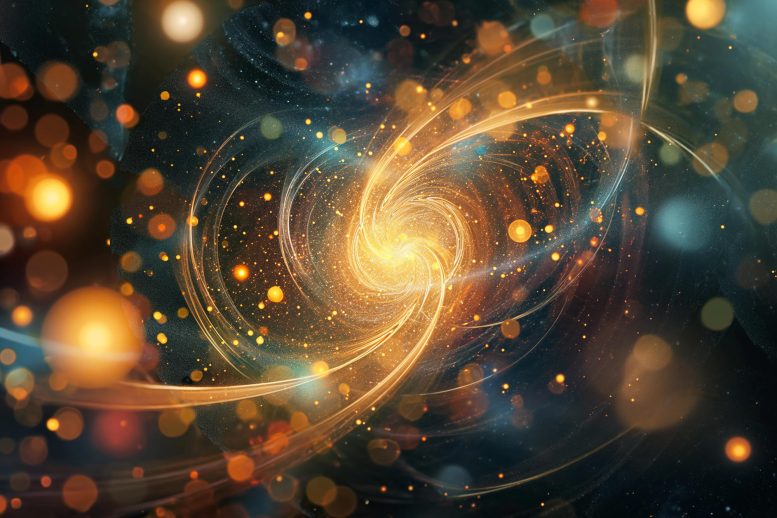
Researchers at Eötvös Loránd University are using advanced particle accelerators to explore the transformation of early Universe’s quark matter into ordinary matter. Their innovative techniques and findings contribute significantly to our understanding of fundamental physics and the strong interaction. Credit: SciTechDaily.com
Their efforts have been centered on mapping the “primordial soup” that filled the Universe in the first millionth of a second following its inception.
Physicists from Eötvös Loránd University have been investigating the components of the atomic nucleus using the three most advanced particle accelerators globally. Their research aims to explore the “primordial soup” that existed in the Universe during the initial microseconds after its creation. Interestingly, their findings indicate that the movement of observed particles bears resemblance to the search for prey of marine predators, the patterns of climate change, and the fluctuations of the stock market.
In the immediate aftermath of the Big Bang, temperatures were so extreme that atomic nuclei could not exists, nor could nucleons, their building blocks. Hence, in this first instance, the universe was filled with a “primordial soup” of quarks and gluons.
As the universe cooled, this medium underwent a “freeze-out”, leading to the formation of particles we know today, such as protons and neutrons. This phenomenon is replicated on a much smaller scale in particle accelerator experiments, where collisions between two nuclei create tiny droplets of quark matter. These droplets eventually then transition into the ordinary matter through freeze-out, a transformation known to researchers conducting these experiments.
Variations in Quark Matter
However, the properties of quark matter vary due to differences in pressure and temperature that result from the collision energy in particle accelerators. This variation necessitates measurements to ‘scan’ matter in particle accelerators of different energies, the Relativistic Heavy Ion Collider (RHIC) in the US, or the Super Proton Synchrotron (SPS) and the Large Hadron Collider (LHC) in Switzerland.
“This aspect is so crucial that new accelerators are being constructed all over the world, for example in Germany or Japan, specifically for such experiments. Perhaps the most significant question is how the transition between phases occurs: a critical point may emerge on the phase map,” explains Máté Csanád, professor of physics at the Department of Atomic Physics, Eötvös Loránd University (ELTE).
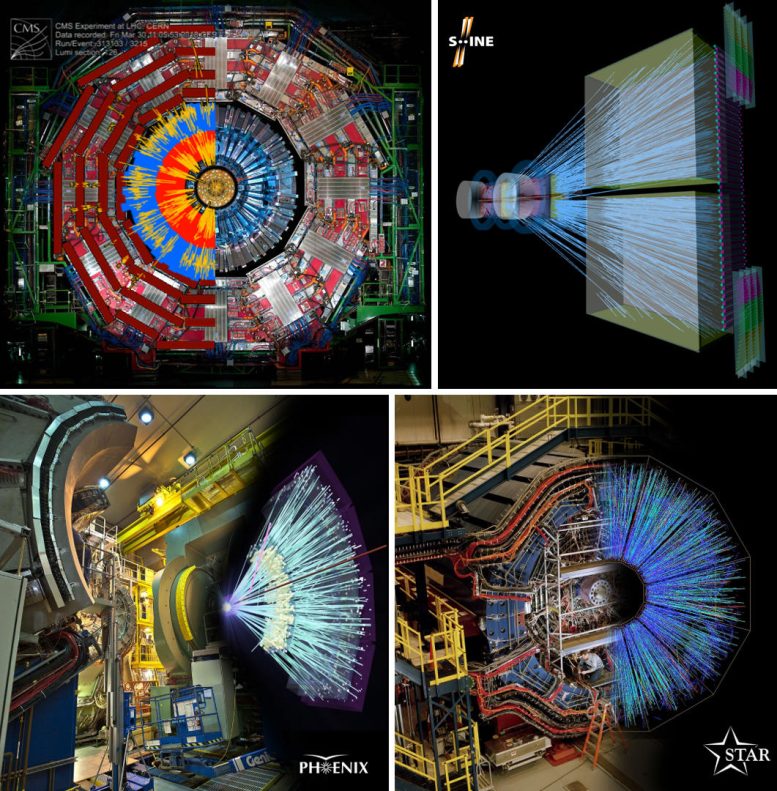
A montage of reconstructed tracks from actual collision events and photographs of the respective detectors, at the Brookhaven National Laboratory and at CERN. Credit: Montage made by Máté Csanád / Eötvös Loránd University Original photos for the montage: STAR és PHENIX: Brookhaven National Laboratory and CMS és NA61: CERN
The long-term goal of the research is to deepen our understanding of the strong interaction that governs the interactions in quark matter and in atomic nuclei. Our current level of knowledge in this area can be likened to humanity’s grasp of electricity during the eras of Volta, Maxwell or Faraday. While they had a notion of the fundamental equations, it took a considerable amount of experimental and theoretical work to develop technologies that have profoundly transformed everyday life, ranging from the light bulb to televisions, telephones, computers, and the internet. Similarly, our understanding of the strong interaction is still embryonic, making research to explore and map it vitally important.
Innovations in Femtoscopy
Researchers from ELTE have been involved in experiments at each of these accelerators mentioned above, and their work over the past few years has led to a comprehensive picture of the geometry of quark matter. They achieved this through the application of femtoscopy techniques. This technique utilizes the correlations that arise from the non-classical, quantum-like wave nature of the particles produced, which in the end reveals the femtometer-scale structure of the medium, the particle-emitting source.
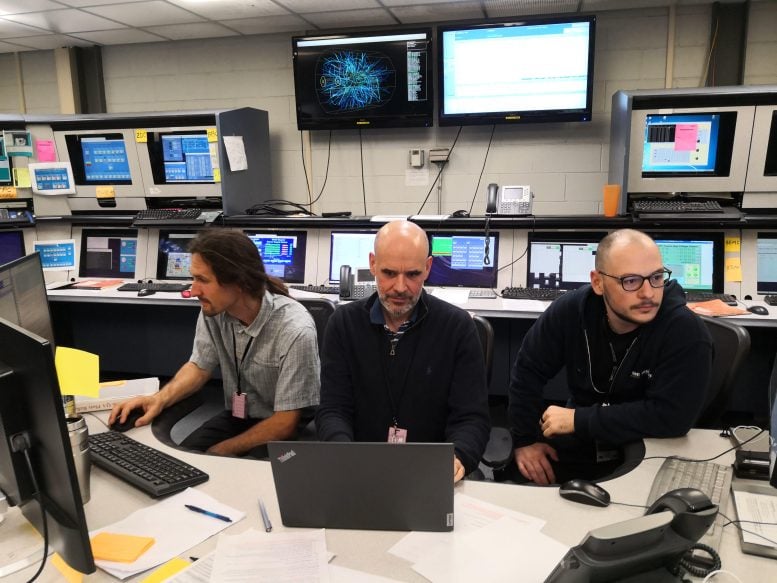
Researchers of the Eötvös University working on the data taking of the STAR experiment at the Brookhaven National Laboratory. Credit: Máté Csanád / Eötvös Loránd University
“In the previous decades, femtoscopy was operated on the assumption that quark matter follows a normal distribution, i.e., the Gaussian shape found in so many places in nature,” explains Márton Nagy, one of the group’s lead researchers.
However, the Hungarian researchers turned to the Lévy process, which is also familiar in various scientific disciplines, as a more general framework, and which is a good description of the search for prey by marine predators, stock market processes, and even climate change. A distinctive trait of these processes is that at certain moments they undergo very large changes (for example, when a shark searches for food in a new area), and in such cases a Lévy distribution rather than a normal (Gaussian) distribution can occur.
Implications and ELTE’s Role
This research holds significant importance for several reasons. Primarily, one of the most studied features of the freeze-out of quark matter, its transformation into conventional (hadronic) matter, is the femtoscopic radius (also called HBT-radius, noting its relation to the well-known Hanbury Brown and Twiss effect in astronomy), which is derived from femtoscopic measurements. However, this scale depends on the assumed geometry of the medium. As Dániel Kincses, a postdoctoral researcher in the group, summarizes, “If the Gaussian assumption is not optimal, then the most accurate results from these studies can only be obtained under the Lévy assumption. The value of the ‘Lévy exponent,’ which characterizes the Lévy distribution, also may shed light on the nature of the phase transition. Thus, its variation with collision energy provides valuable insight into the different phases of quark matter.”
Researchers from ELTE are actively participating in four experiments: NA61/SHINE at the SPS accelerator, PHENIX and STAR at RHIC, and CMS at the LHC. The NA61/SHINE group of ELTE is led by Yoshikazu Nagai, the CMS group by Gabriella Pásztor; and the RHIC groups by Máté Csanád, who is also coordinating ELTE’s femtoscopy research.
The groups are making substantial contributions to the success of experiments in various capacities, ranging from detector development to data acquisition and analysis. They are also engaged in many projects and theoretical research. “What is unique about our femtoscopy research is that it is carried out in four experiments in three particle accelerators – giving us a broad view of the geometry and possible phases of quark matter,” states Máté Csanád.
Reference: “A novel method for calculating Bose–Einstein correlation functions with Coulomb final-state interaction” by Márton Nagy, Aletta Purzsa, Máté Csanád and Dániel Kincses, 8 November 2023, The European Physical Journal C.
DOI: 10.1140/epjc/s10052-023-12161-y

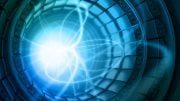
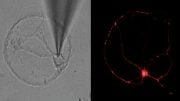
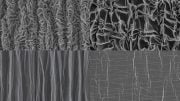


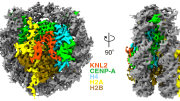


If the big bang consisted of a particle of matter containing all the mass and energy of the known universe in a single speck and just floating in space prior to exploding, where did the space come from?
What is the Big Bang?
According to the theory of topological vortex gravitational field, the Big Bang can be a local manifestation, and the Secrets of the Universe’s Earliest Moments was the synchronization effect of topological vortex gravitational field.
The Beyond the Big Bang by accelerators is a self comforting imagination.
Space does not exist. Also, the idea of an “explosion” is why 99% of BBT descriptions confuse people. Imagine the universe as something of constant size. Then imagine certain fields/energy universally transforming over time. That’s all. It’s just that the transformation leads to light waves losing energy. Since losing energy in light is akin to having the wavelengths stretched out over time, the light is *described* as having traveled through an expanding space. But that is just a perspective thing. The universe is neither expanding, staying the same size, OR contracting. ALL such measures require something to compare it to. There is NOTHING to compare it to. It’s just that in all the different ways we can compare to the current state to the previous state, some people like imagining it as an expansion. However, the convenience of that supposedly unbiased choice of perspective DOES come with the cost of implying to the layman that the universe is an actual 3-D object expanding into surrounding space. There is no surrounding space. There is no space in between. Space does not exist. Only things that exist exist. Fields and particles (depends on your perspective). Nothing else. That’s me perspective, of course, but I do think words matter and saying the universe expands or saying there is a thing called space creates things we have not proven to exist.
There was no space. There was nothing.
I wonder how folks could be so credulous to the extent of believeing the “little bang”. By my standards, the “big bang” is no plausible explanation of our origin as well as the universe’s. It’s just a piece of crap cooked up by the science sods to turn people away from God. Funnily enough it worked!
Pope, your logic about the Big Bang seems to be very simple. There are many things which we have today in this world can turn us away from the God but still we are closer to the God. These things are the results of our deeper understanding of Science.Science (including technology) itself may be an idea or thought of God. However, this is differently interpreted and practiced by the Scientific community from how the religious scholars interprete the teachings of Gods in the religions. Only a very people can even simply understand and study and take interest in the Big Bang theory of Physics about the origin of the Universe, so saying that the Big Bang theory is a concept devised by the Scientists to turn people away from the God is unacceptable.
Wow. You think the universe of scientists has people like you at its center. You think people have intentions related to you, such as your religion? How about your vanity? When scientists are trying to solve a puzzle, you don’t even exist in their thoughts. People like you don’t exist in their thoughts. Your religion does not exist in their thoughts. You don’t even matter and no energy is wasted on any intention to destroy your religion. You are unbelievably self-centered and arrogant to think so. I suggest you learn more about the Fundamental Attribution Error. You seem to think that if YOU only see one motivation for a behavior, that is the ONLY motivation for such behavior. And that is wrong. People are interested in learning which models of thought best describe the phenomena around us. If you’re so insecure that you can’t handled new perspectives, that’s your problem. But nobody cares about your religion, at least not as long as it is not damaging people. Religious oppression, religious wars, religious obstruction to discovery – yeah, those become a problem. But a scientist working on a Lambda-CDM model doesn’t even have a twinkle of thought about your religion or you. Deal with it.
Funny enough, you can’t see the parallels of people grasping at an idea that’s important to them. Some people invest a lot of time and energy into their hypotheses. When they are the challenged, the people may react strongly (like reacting to a hypothesis of a little bang). Do you think humans are magically different when it comes to how they react to ideas that challenge the personal notion of religion that they have invested in? The parallel is right there for you to see. YOU brought it up. But can you see it in the mirror?
Bravo! I enjoyed that. Thanks.
The rampant prevalence of pseudoscience is heartbreaking. The Physical Review Letters (PRL) have created the dirtiest and ugliest era in the history of science.
Over 90% of the energy flow in the universe can’t be explained (except with “dark” labels that nothing more than admitted ignorance). Pretty much ALL hypothesizing is currently taking place with extremely limited means of testing them. Without testing, you have what can politely be called “philosophy”. If you start saying things that are provably wrong (flawed logic or exaggerations of evidence), then you have pseudoscience. I don’t see the pseudoscience here. Just philosophy.
The article was good and has a good bearing of the process from the primordial soup, showing a process following the roadmap, the thought of a (charting pattern of instances) building block after block evolving, mechanical workings of the mechanisms akin to (springs/cogged gears/welders all internally of a machine , this also would probably have offshoot areas to build more lines/blocks to the data image.
I admire your piety.
If you firmly believe that two objects (such as two sets of cobalt-60) of high-dimensional spacetime rotating in opposite directions can be transformed into two objects that mirror each other. You will achieve success like the Physical Review Letters (PRL).
Best wishes to you.
This narrative of the origin of the universe and of existence is far fromm being convinving for it does not involve the extraordinary implications of philosophical data in terms of the ultimate origin and nature of existence and of consciousness. To explain the earliest nature of our ultimate origin requires a more critical understanding of what are the metaphysical and the nature. The narratives in my three cosmology books do however take these in an integrated approach to explain the ultimate origin and nature of the universe and of existence
As the reason for expansion is not known, the initial state after a millisecond is just a logical assumption. It is possible that the atoms were already there when expansion started. Why should it be a primordial soup of quarks and gluons? In particle accelerators, we may observe (indirectly) some fragments of matter (quarks, gluons) made up of still smaller fundamental particles. So there is no logic in comparing the two situations.
Imagine how far we’ll get in understanding our universe when scientists stop dismissing the results of experimentation that validates the statement, “In the beginning, God created the heavens and the Earth.”
“Validates”? That’s a word with a cloudy definition. It has the common meaning of “is not inconsitent with”. People who sell “health supplements” use that phrase all the time. It has no valuable meaning in almost any context. Consider the statement, “In the beginning, The Great Cornholio created the heavens and the Earth.” That statement is validated by all the same scientific works that supposedly validate your statement.
This universe, a finite structure within an infinite space/realm/’thing’.
The term infinite is used in its true meaning.
God and science have useful aspects for understanding what we humans cannot wrap our brains around the mystery of it all.
The universe has fundamental laws in every domain we are part of one physical reality. It will all be work out in due time, that is if we humans don’t destroy the human race by foolishness that pit one nation against another.